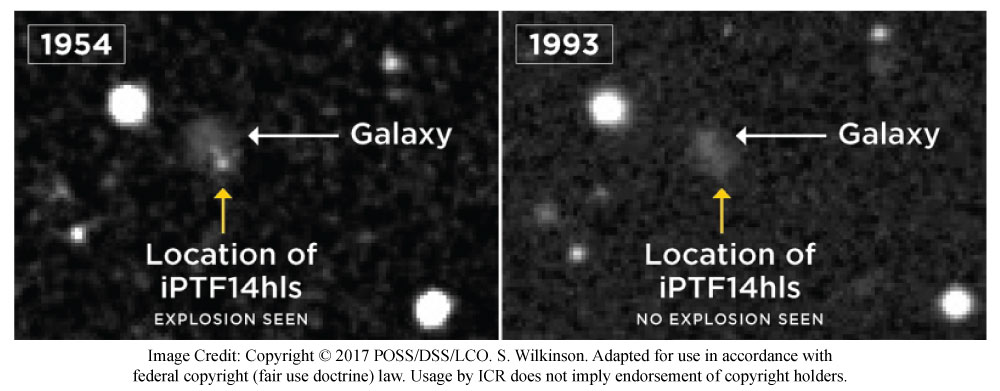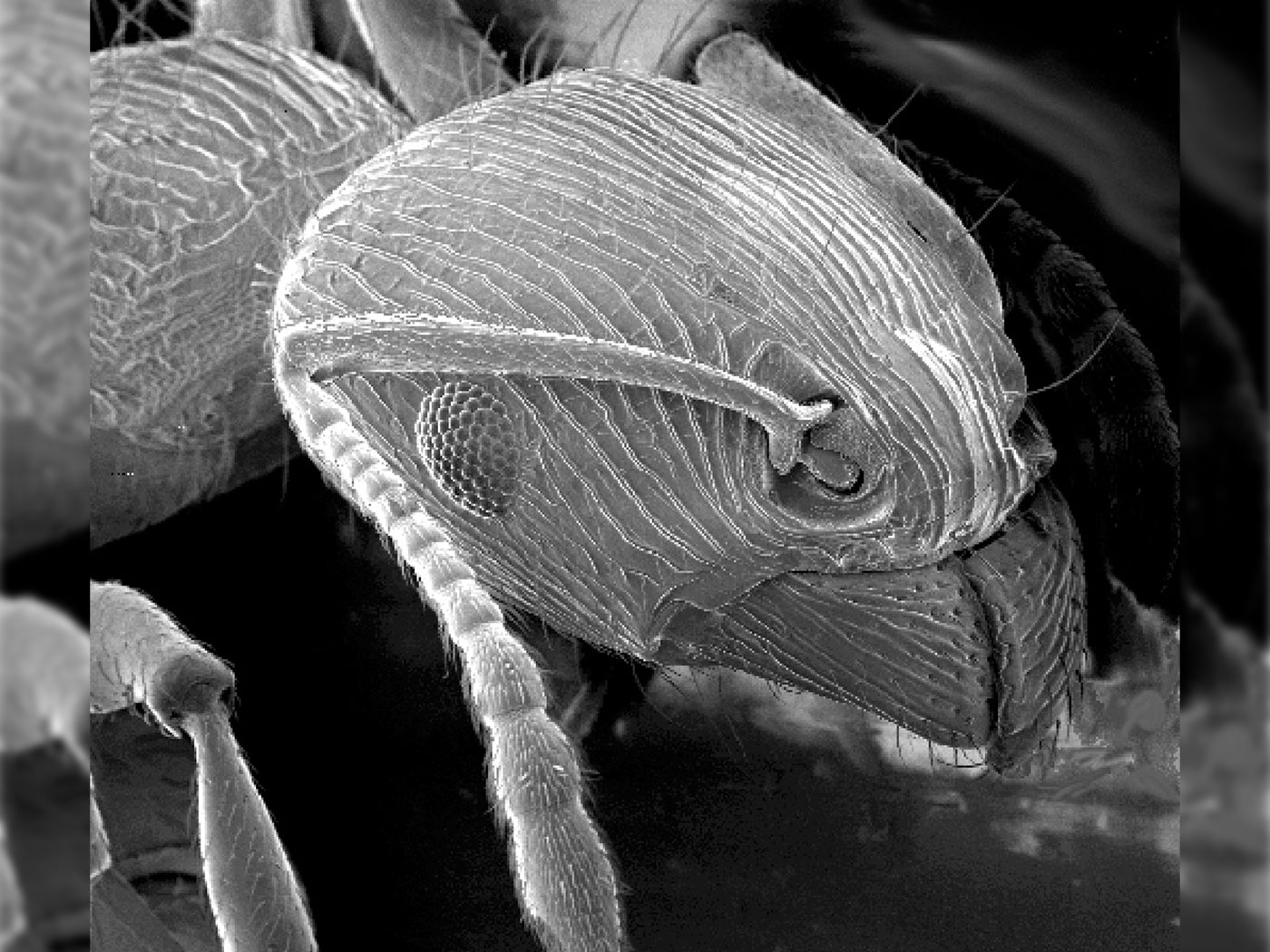Secular astronomers recently described three bizarre discoveries that challenge mainstream ideas of an evolving universe.
The newly discovered massive planet NGTS-1b orbits so near its small faint star and so fast that one orbit lasts only 2.6 Earth days. It has the largest planet-to-companion-star ratio so far discovered. According to University of Warwick News, “Its existence challenges theories of planet formation which state that a planet of this size could not be formed by such a small star. According to these theories, small stars can readily form rocky planets but do not gather enough material together to form Jupiter-sized planets.”1 But nobody has ever documented a star forming a planet. Thus, the whole idea that stars form planets comes not from observation but evolutionary speculation. One wonders if God, who actually formed all the planets, placed this one in space just to demonstrate what only He could do.
But nobody has ever documented a star forming a planet. Thus, the whole idea that stars form planets comes not from observation but evolutionary speculation. ![]()
A separate team of astronomers used the world’s largest single-dish millimeter-wavelength telescope to target a galaxy at one of the greatest apparent distances from Earth.2 They used the aptly-named Large Millimeter Telescope (LMT) in Mexico’s Pico de Orizaba National Park. The team used gravitational lensing to image what the University of Massachusetts Amhurst News said was “the oldest object ever detected by the LMT,” based on the mainstream idea that the most distant objects are the oldest.3

UMass Amherst astrophysicist Min Yun, who participated in the research, published in Nature Astronomy.4 He said that the object G09 83808 was supposedly “very close to being one of the first galaxies ever to form.”3 Assuming galaxies simply “form” naturally, it should look extremely primitive, lacking more typical galaxy structure and lacking heavy elements that should not yet have evolved in its supposedly nascent stars.
Instead, the study authors “find that its gas and dust properties are similar to those measured for local [nearby] ultra luminous infrared galaxies.”4 In other words, it doesn’t look like a baby galaxy at all. This discovery adds more weight to the “mature distant galaxy” problem for stellar evolution. Each such galaxy refutes the entire notion that the most distant galaxies represent early, evolving objects. Instead, the most distant ones often possess just as much “maturity” as nearby ones, as though they were all created “mature” right from the start.5
Lastly, astronomers based at the Las Cumbres Observatory (LCO) in California included data from Keck Observatory in Hawaii to describe a star that exploded repeatedly over the last 50 years. Stars are supposed to explode just once before they turn into space dust.
Peter Nugent, a Senior Scientist at Lawrence Berkeley National Laboratory co-authored the study, published in Nature.6 He told Keck Observatory News, “While the spectra bear a resemblance to normal hydrogen-rich core-collapse supernova explosions, they grew brighter and dimmer at least five times more slowly, stretching an event which normally lasts 100 days to over two years.” Lead author and LCO researcher Iair Arcavi said, “This supernova breaks everything we thought we knew about how they work. It’s the biggest puzzle I’ve encountered in almost a decade of studying stellar explosions.” 7
The study authors speculated that the star was so massive and hot that it somehow generated enough antimatter in its core to explode and collapse several times over several decades. Nature coauthor from UC Berkeley Daniel Casen said, “These explosions were only expected to be seen in the early universe and should be extinct today. This is like finding a dinosaur still alive today.”7
Astronomical revelations like these continually baffle secular astronomers, but they fit the creation-friendly concept that God, not nature, is responsible for the wondrous cosmos. ![]()
Secular expectations call for stars to be larger than their orbiting gas giant planets, immature distant galaxies, and violent re-exploding stars only in distant space. Actual observations show just the opposite. A star too small to make its orbiting planet, “mature” galaxies in distant space, and re-exploding stars in nearby “recent” space. Astronomical revelations like these continually baffle secular astronomers, but they fit the creation-friendly concept that God, not nature, is responsible for the wondrous cosmos.
References
- ‘Monster’ planet discovery challenges formation theory. Warwick News & Events. Posted on warwick.ac.uk October 31, 2017, accessed November 6, 2017.
- This galaxy has one of the highest recorded redshifts. The standard assumption is that this implies a very great distance.
- Using Powerful New Telescope, Astronomers Confirm Observing One of the Oldest Objects in the Universe. University of Massachusetts Amherst News. Posted on umass.edu November 6, 2017, accessed November 9, 2017.
- Zavala, J. A. et al. 2017. A dusty star-forming galaxy at z = 6 revealed by strong gravitational lensing. Nature Astronomy. Published online before print, November 6, 2017.
- Mature, distant objects like G09 83808 fit the Anisotropy Synchrony Convention for distant starlight. See Genesis and Distant Starlight Podcast.
- Arcavi, I. et al. 2017. Energetic eruptions leading to a peculiar hydrogen-rich explosion of a massive star. Nature. 551 (7679): 210-213.
- Astronomers Discover A Star That Would Not Die. Keck Observatory News. Posted on keckobservatory.org November 8, 2017, accessed November 9, 2017.
*Brian Thomas is Science Writer at the Institute for Creation Research and earned his M.S. in biotechnology from Stephen F. Austin State University.
Stage Image: Artist’s impression of planet NGTS-1b with its neighboring star.
Stage Image Credit: Copyright © 2017 University of Warwick. M. Garlick. Adapted for use in accordance with federal copyright (fair use doctrine) law. Usage by ICR does not imply endorsement of copyright holder.
Article posted on December 4, 2017.













